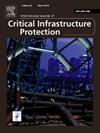优化车辆安全:一个使用深度迁移学习和基于元启发式的遗传算法优化的多分类框架
IF 5.3
3区 工程技术
Q1 COMPUTER SCIENCE, INFORMATION SYSTEMS
International Journal of Critical Infrastructure Protection
Pub Date : 2025-02-24
DOI:10.1016/j.ijcip.2025.100745
引用次数: 0
摘要
作为物联网(IoT)范式的延伸,车联网(IoV)使智能汽车更容易连接到互联网并相互通信。由于智能汽车功能的增强,消费者对车联网技术的兴趣显著增长。然而,车联网的快速发展引发了严重的隐私和安全问题,可能导致危险的事故。为了检测对物联网网络的入侵,一些学者开发了基于深度学习的算法。这些模型的目标是检测车辆网络内部的恶意攻击,降低智能车辆事故的频率。该方法采用了一种先进的三层设计,结合了集成方法、遗传算法(GA)和卷积神经网络(cnn)。为了执行基于cnn的分析,我们首先将高级车联网数据转换为图像格式。然后通过遗传算法对每个基学习模型的超参数进行优化,提高了模型的性能和自适应性。最后,我们使用集成方法将三种CNN模型的输出结合起来,大大提高了入侵检测系统的长期鲁棒性。评估使用了两个数据集:CICEVSE数据集,其中包含来自12个不同入侵类别的22,086个样本;以及可公开访问的汽车黑客数据集,其中包含来自5个不同入侵类别的29,228个样本。实验结果表明,该策略在Car Hacking图像上的最优得分为100%,在CICEVSE图像上的最优得分为93%,具有良好的准确率。研究结果对在复杂的车联网环境下开发安全、有效、灵活的入侵检测系统具有重要意义。本文章由计算机程序翻译,如有差异,请以英文原文为准。
Optimizing vehicle security: A multiclassification framework using deep transfer learning and metaheuristic-based genetic algorithm optimization
An extension of the Internet of Things (IoT) paradigm, the Internet of Vehicles (IoV) makes it easier for smart cars to connect to the Internet and communicate with one another. Consumer interest in IoV technology has grown significantly as a result of the increased capabilities of smart vehicles. However, the rapid growth of IoV raises serious privacy and security issues that can lead to dangerous accidents. To detect intrusions into IoT networks, several academics have developed deep learning-based algorithms. Detecting malicious assaults inside vehicle networks and lowering the frequency of smart vehicle accidents are the goals of these models. The proposed approach makes use of an advanced three-layer design that combines ensemble approaches, Genetic Algorithms (GA), and Convolutional Neural Networks (CNNs). Three essential steps are used to execute this methodology: In order to perform CNN-based analysis, we first convert high-level IoV data into image format. The hyperparameters of each base learning model are then optimized via GA, which improves the performance and adaptability of the models. Lastly, we combine the outputs of the three CNN models using ensemble approaches, which greatly improves the intrusion detection system’s (IDS) long-term robustness. Two data sets were used for the evaluations: the CICEVSE dataset, which contains 22,086 samples from 12 distinct intrusion categories, and the publicly accessible Car Hacking dataset, which contains 29,228 samples from five different intrusion categories. According to the experimental findings, the proposed strategy obtained an optimal score of 100% on the Car Hacking images and 93% on the CICEVSE images, demonstrating excellent accuracy. The findings have substantial implications for the development of safe, effective, and flexible intrusion detection systems in the complicated environment of the Internet of Vehicles.
求助全文
通过发布文献求助,成功后即可免费获取论文全文。
去求助
来源期刊

International Journal of Critical Infrastructure Protection
COMPUTER SCIENCE, INFORMATION SYSTEMS-ENGINEERING, MULTIDISCIPLINARY
CiteScore
8.90
自引率
5.60%
发文量
46
审稿时长
>12 weeks
期刊介绍:
The International Journal of Critical Infrastructure Protection (IJCIP) was launched in 2008, with the primary aim of publishing scholarly papers of the highest quality in all areas of critical infrastructure protection. Of particular interest are articles that weave science, technology, law and policy to craft sophisticated yet practical solutions for securing assets in the various critical infrastructure sectors. These critical infrastructure sectors include: information technology, telecommunications, energy, banking and finance, transportation systems, chemicals, critical manufacturing, agriculture and food, defense industrial base, public health and health care, national monuments and icons, drinking water and water treatment systems, commercial facilities, dams, emergency services, nuclear reactors, materials and waste, postal and shipping, and government facilities. Protecting and ensuring the continuity of operation of critical infrastructure assets are vital to national security, public health and safety, economic vitality, and societal wellbeing.
The scope of the journal includes, but is not limited to:
1. Analysis of security challenges that are unique or common to the various infrastructure sectors.
2. Identification of core security principles and techniques that can be applied to critical infrastructure protection.
3. Elucidation of the dependencies and interdependencies existing between infrastructure sectors and techniques for mitigating the devastating effects of cascading failures.
4. Creation of sophisticated, yet practical, solutions, for critical infrastructure protection that involve mathematical, scientific and engineering techniques, economic and social science methods, and/or legal and public policy constructs.
 求助内容:
求助内容: 应助结果提醒方式:
应助结果提醒方式:


